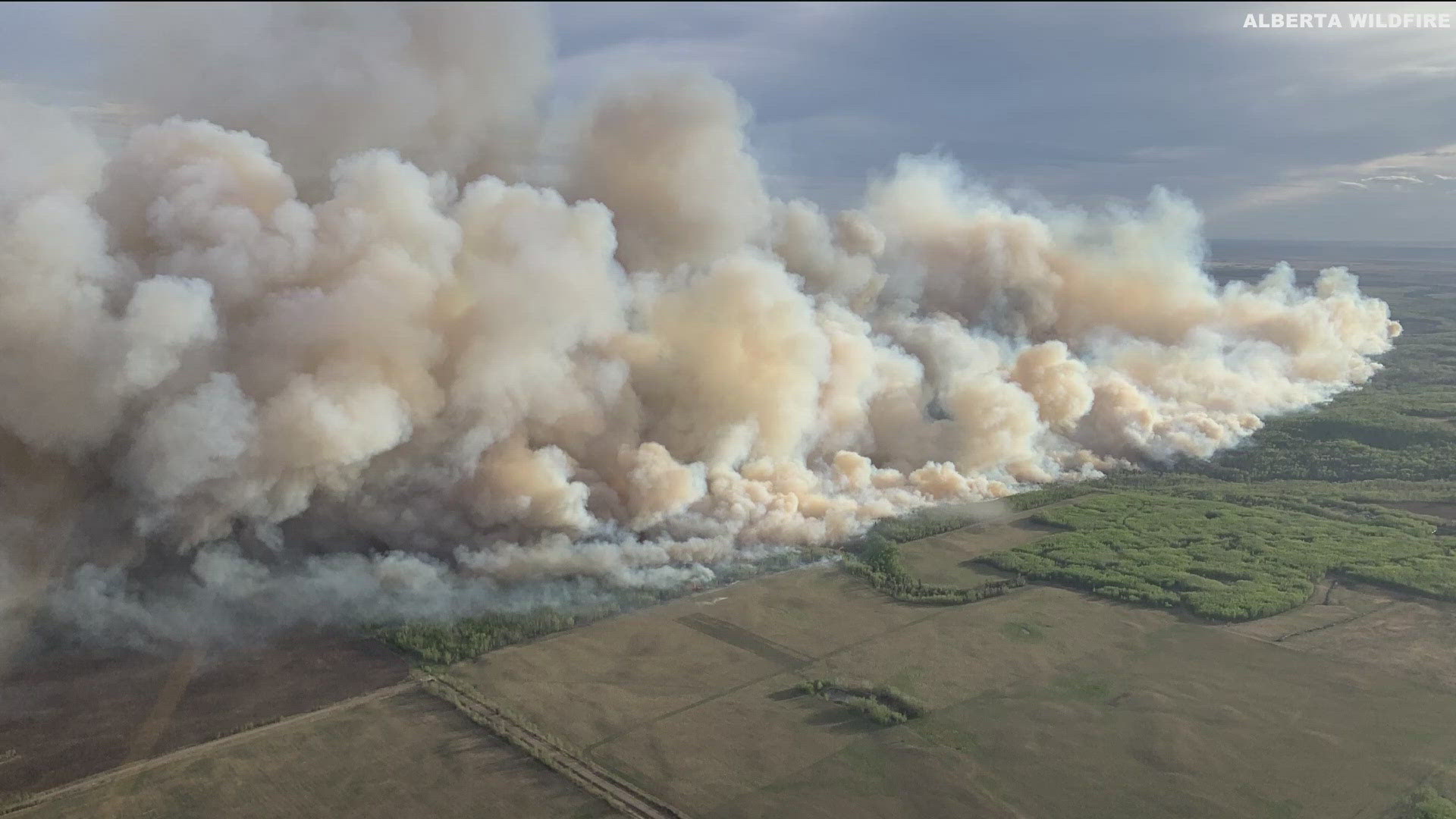MINNEAPOLIS — The summer of 2023 brought smoky skies to the Land of 10,000 Lakes and experts predict this summer will bring much of the same.
Fires raging in British Columbia and Alberta cast a haze over parts of Montana, the Dakotas, Minnesota and Wisconsin on Sunday, lingering into Monday morning.
The Minnesota Pollution Control Agency (MPCA) issued its first air quality alert of the season for the entire state on Sunday. The agency said pollution levels will be unhealthy for everyone. People were urged to remain indoors and avoid heavy exertion outdoors until the warning expired at noon on Monday.
As of 12:30 p.m., the MPCA had extended the alert in the southern half of the state until 11 p.m.
A few days earlier, on Thursday, May 9, meteorologists with the MPCA said the hot weather and more-than-average number of wildfires in Canada could lead to more air quality alerts this summer.
“Our meteorologists are closely monitoring air quality around the state, and we are committed to providing accurate information promptly so that everyone can stay informed about changing conditions," said MPCA lead meteorologist Matt Taraldsen.
Dry weather can add to the haze in the air, but Minnesota's recent rains have improved drought conditions statewide. No parts of the state are currently under a severe drought, 11% is in moderate drought and 28% of Minnesota is abnormally dry. Forecasts predict there will be some drought this summer across both Minnesota and Canada with especially dry weather in northern and extreme southeast parts of the North Star state.
Canada witnessed a record number of wildfires in 2023 that also caused choking smoke in parts of the U.S. and forced tens of thousands of people to evacuate across British Columbia. Smoke from those fires led to hazy skies and health advisories across multiple U.S. cities, including the Twin Cities metro.
Surface ozone is also a concern when forecasting air quality alerts. Slightly above-normal temperatures, especially those issued in the early summer months, can increase air quality alerts to elevated surface ozone. Persistent wildfire smoke can also aid in generating surface-level ozone, which the MPCA noted as a factor in creating poor air quality last summer.
Air quality is measured on a color scale called the air quality index, or AQI. When daily average fine-particle levels like smoke, ozone or other pollution push the AQI to orange or above, sensitive groups like children, older adults and people with respiratory conditions feel the effects.
To find more information on air quality and AQI, check out the MPCA website.
Watch more WeatherMinds:
Watch the latest deep-dives and explainers on weather and science in our YouTube playlist:
WATCH MORE ON KARE 11+
Download the free KARE 11+ app for Roku, Fire TV, Apple TV and other smart TV platforms to watch more from KARE 11 anytime! The KARE 11+ app includes live streams of all of KARE 11's newscasts. You'll also find on-demand replays of newscasts; the latest from KARE 11 Investigates, Breaking the News and the Land of 10,000 Stories; exclusive programs like Verify and HeartThreads; and Minnesota sports talk from our partners at Locked On Minnesota.
- Add KARE 11+ on Roku here or by searching for KARE 11 in the Roku Channel Store.
- Add KARE 11+ on Fire TV here or by searching for KARE 11 in the Amazon App Store.
- Learn more about the KARE 11+ app for Apple TV in the Apple App Store.
- Learn more about KARE 11+ here.

